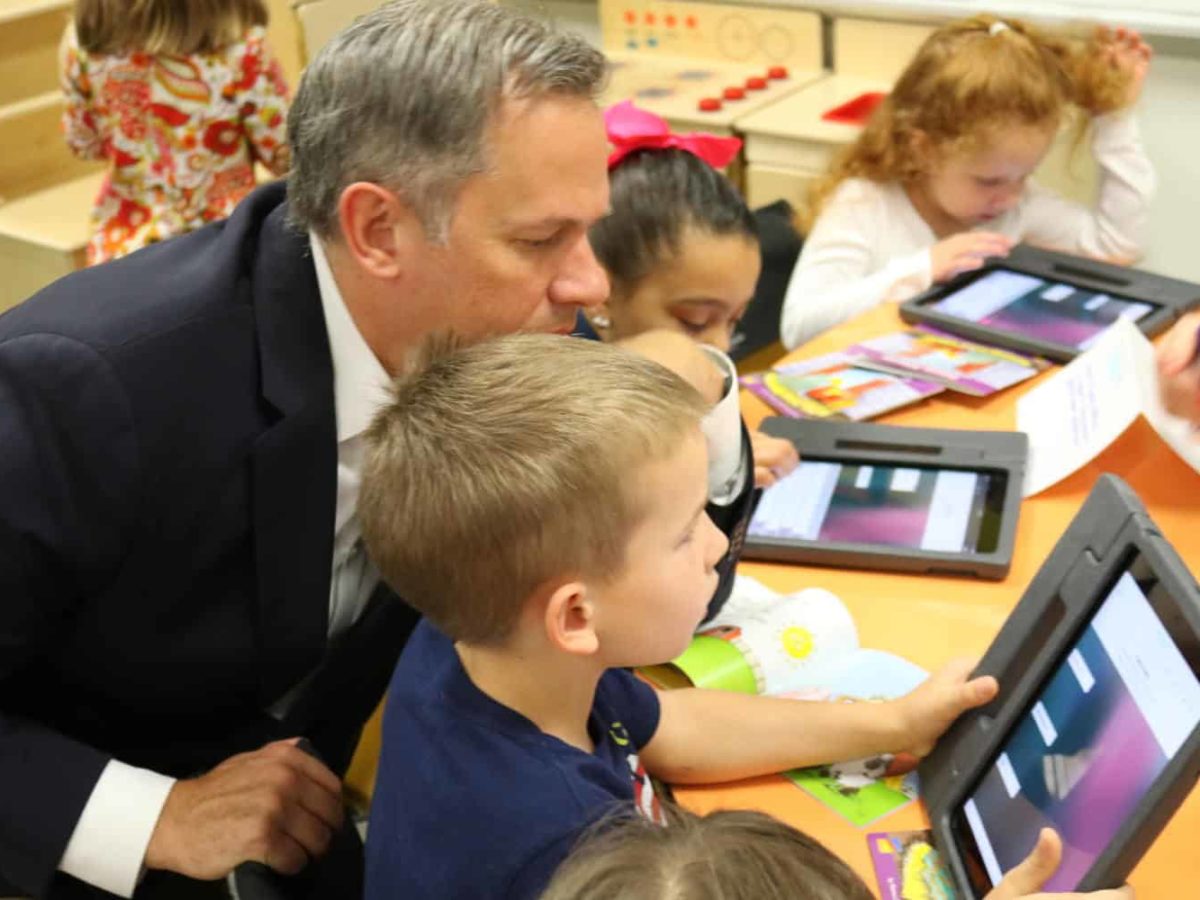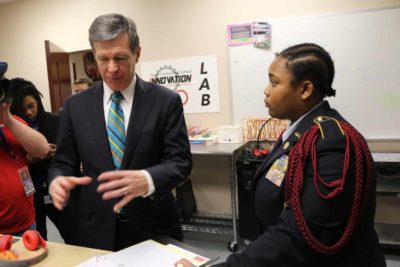

Continuing his advocacy for digital learning and connectivity in schools, Lieutenant Governor Dan Forest visited Oakview Elementary Thursday in Apex to celebrate Digital Learning Day.
The school just opened last fall and serves pre-K through fifth grade students in a growing area right outside the Triangle. Forest held up Oakview Elementary as an example of a revolutionary user of technology — something he hopes schools statewide can become.
Forest has been advocating for the infrastructure to support the kind of teaching and learning happening at Oakview for a few years now. This year, Forest said North Carolina will be the first state in the country with high-speed broadband access in every classroom at every school.
“Probably, it was about four years ago or so that we were…putting together a new digital learning plan for the state of North Carolina,” Forest said. He said he chose to make the bold prediction that the state could be the first to have every classroom connected. With the help of an annual $65 million investment from the federal government and $19 million from the state, they made it happen. Forest said the state now has over $100 million going to digital connectivity each year.
Forest visited several classrooms at Oakwood but had media availability for only one — Samantha Hartman’s kindergarten class.
At the center of the classroom was a screen with an app pulled up that helped students self-regulate their noise level with bouncing emojis. Small groups worked with tablets — some on their own and some receiving direct instruction from the teacher or teacher assistant.
Hartman asked a more advanced reading group to type their responses to questions about a passage. Two boys were playing an interactive spelling game on a tablet, and another student was creating her own story.
Oakview practices a B.Y.O.D. (bring your own device) policy, which Forest applauded, saying he thinks the model will foster increased parent involvement.
“I think what you’re going to see is the ability for parents to get engaged in their student’s education at a new level because of the bring-your-own-device model,” Forest said.
He said a lot of moving parts are coming together in the education world — with dropping costs of broadband technology, digital storage, devices, and increasingly integrated curriculum.
“We have, for the first time, I believe in the history of the world, this opportunity to do what you’re doing here…to be able to customize content and curriculum to every single student.”
In low-wealth schools, the question of how the digital learning movement will be tailored to students’ needs is an ongoing one. Forest said he expects North Carolina, despite its large rural regions, to be one of the first states to reach the “last mile,” which means having every home connected to Internet.
In response to a question from EducationNC on how to make sure students without Internet access at home don’t fall behind, Forest said there’s not as much of a gap as one might think.
He said, most of the time, children can upload all the materials they need to do their homework while in the school building.
“They may not have full access like a lot of students do to all the content that’s available out there, so there is still a gap, but the gap’s not as large as it was,” Forest said. “I think, when it comes to parental involvement, I think that’s where you really see the connection happening.”
Watch Forest’s full remarks below, followed by some words from Oakview Elementary Principal Steve Moore.


